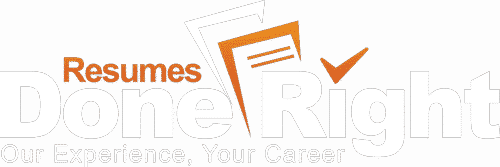
Congratulations! You’re going to start working from home after successfully landing the gig of your dreams. Working from home sounds like the ultimate success. No workplace politics, you can listen to music, be with your pet, and control the room temperature while wearing your fuzzy slippers. What’s not to love about working from home? As it turns out, working from home takes a special sort of discipline compared to the traditional office work environment. How can you set yourself up for success on your WFH journey? Let’s review some of the challenges you may face and how to manage them.
6 Common WFH Pitfalls and How to Manage Them
1. Getting too comfortable
One of the biggest perks about working from home is the ability to ditch the dress code and wear your comfiest athleisure wear. While this is not inherently bad, succumbing to the siren call of tracksuits and doonas can cause your productivity ship to crash into the rocks. Getting too comfortable will inevitably lead to napping and before you know it, your fifteen-minute morning break turned into a 4-hour snooze. Striking a balance between comfort and professionalism is key to ensuring you stay focused and productive throughout the day, particularly when that 15h00 slump comes. To combat the too comfortable pull, maintain a routine similar to what you had in the office. Wake up and shower, eat breakfast and get dressed. It’s okay to be comfortable and ditch the tie or hosiery but beware of falling into the day pyjamas and night pyjamas trap. Remember, you’re meant to be working from home, not taking a sick day.
2. Interruptions
The daytime world of your neighbourhood is a mystery until you spend a week at home. It’s only as days go by that you discover the neighbour’s dog barks all day, the kids come home for lunch, the doorbell rings with deliveries, post, and solicitations for business, and did the construction have to start today?! It’s easy to forget that while we’re working in the office, the world outside is being worked on too. The odd interruption is natural and happens even in the office, but if you’re being interrupted often enough to be a detriment to your work, it’s time to set up some boundaries and shut the world out. There are a few simple things you can put into place to decrease interruptions at home. First, make sure to pick a place in your home that is removed from noisy areas. If you do not have this option, try to pick somewhere with a door you can close. Next, make use of Do Not Disturb signs. If unsolicited visitors are an issue, place a sign on your door advising you’re working and not interested in sales calls. If family members are the issue, make sure they are aware that you’re working and the area of the home you’re in is a no-go-zone between certain hours. Finally, if there are outdoor noises beyond your control, invest in a pair of noise-cancelling headphones or acoustic panels or curtains to lessen the noise coming through the windows.
3. Visual Distractions
Now that you’ve got the noise distractions taken care of, it’s time to tackle the visual ones. Is there a basket of laundry sitting in your line of sight? Are dishes piled in the sink? Maybe you’ve got clutter on your desk and shelves? There’s no better way to procrastinate than getting lost in a task completely unrelated to work. Before you start your WFH journey, clean your work area so it’s free from junk, unnecessary clutter, and items that may lead to prolonged attention away from work. Not everyone has the luxury of having a dedicated home office so if you work from the kitchen or perhaps the living room, try to instil a habit of tidying the area before the end of each day so that your work can start immediately without having to clean up to access your work.
4. Pets
Let’s face it. Spending more time with your pets is everyone’s goal. Our pets provide us with unconditional love, snuggles, and joy. They also provide with a million reasons not to work! During the pandemic lockdown, pet owners everywhere experienced the unique set of challenges that come with working from home with a pet. Dogs, in particular, will need strong boundaries if you have a canine friend who is revelling in your extra attention. If your pup is crate trained, you’re ahead of the game. Don’t be afraid to keep your pet’s crating routine intact so that you are free to work undisturbed. If your pet is older or requires less attention, provide them with a bed or cozy spot to curl up in while you work so they can monitor you and still be close by. Cats are another challenge entirely. If you can, keep your cat from entering your workspace to avoid rogue keyboarding and your laptop being used as a heating pad. If your cat is possessed by the howling of a thousand demons when they’re locked out of the room you’re in, try to set up a kitty-friendly corner that will keep them entertained and out of the way while you work.
5. Space
This can be one of the most challenging aspects of WFH life. As mentioned, not everyone is fortunate enough to have a dedicated office area, especially when so many people never had the intention of working from home in the first place. If you are one of these people, you will have to take some time to redesign your space to accommodate your new working arrangement. This might include purchasing new furniture like a computer stand, a desk, a partition to separate your “work zone” from your TV room. Other hacks include getting an easel to display a whiteboard or projection screen, adding shelves to your wall, purchasing a filing cabinet, or getting baskets to store work items neatly when not in use. If your work is sensitive and confidential, don’t forget to find a secure place under lock and key to store your documents. No matter how small your space is, make it work for your needs and distinguish your work area from the sofa or bed. This will prevent you from getting too comfortable while working that you fall asleep.
6. Overworking
Overworking is by far the biggest pitfall of WFH life, especially if you’re a gig worker or work without set hours. There’s no quicker way to burn out than not taking your deserved breaks and leaving work at “work”. If you need reminders to take your breaks, set alarms at the appropriate times and stick to them. Do you have a dog? Take them out for quick walks to get up and away from your phone and computer to get some fresh air and reset your brain. If you have some household work you want to get done, pop a load of laundry in or wash your dishes while on your break. By the time your workday is complete, your chores will be too, and you can spend the rest of your time relaxing and enjoying friends or family. Work/life balance is difficult to achieve when your work happens in your home. Your health matters and stepping away to exercise, eat, or focus on a non-work-related task can reenergize you and keep you productive and sane, helping you lead in the gig economy.
Concluding Remarks
Working from home can be an amazing transition if you’re prepared to put in the work to set yourself up for success. Whether it’s a temporary arrangement or a permanent change, working from home can provide you with a unique opportunity to excel at your career and save costs on commuting and petrol and can lead to greater work prospects that were previously unavailable to you. Are you ready to make the shift? Get a free resume consultation today to help you pursue the remote job of your dreams.

